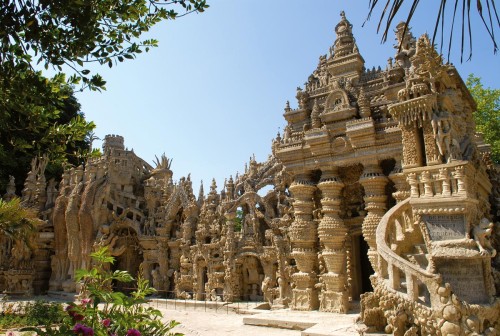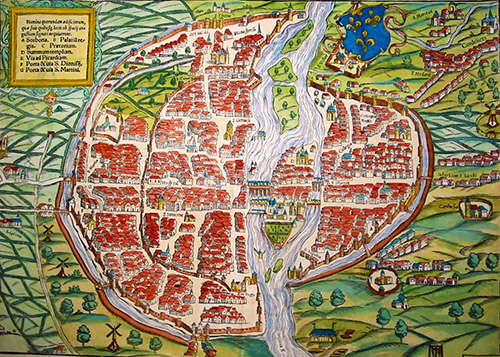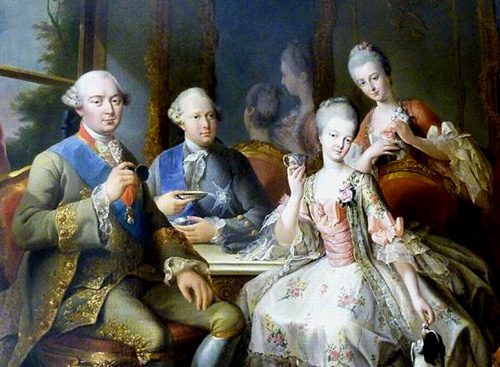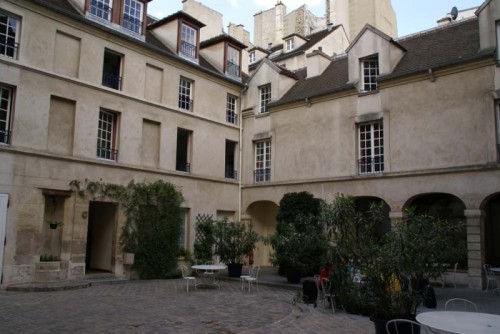
Fed up with waiting in line for ages for the main tourist attractions? Want to discover something rather more unique? We’re fond of seeking out the less talked-about things to see and do, and believe us, France has no shortage of them, so here are a few of our recommendations for the path less travelled.
Postman Cheval’s Ideal Palace
The story goes that in 1879, Ferdinand Cheval, a 43 year old rural postman, stumbled over a stone, and on picking it up, recollected a dream he’d had 15 years previously, in which he built a palace. Inspired by the stone’s unusual shape, Cheval took it home, and during the next 33 years, he collected enough stones and pebbles – at first, carrying them home in his pockets but then later, employing a wheelbarrow for the task – to build his fabulous Temple of Nature, replete with real and mythical creatures. In 1969, it was declared a protected Historical Landmark, and in 1984, the Palais Idéal (as it is now called) was featured on a French stamp.
In addition to his palace, when he was 78, Cheval began to build his own mausoleum, completing it eight years later, a year before he died in 1924. The elaborate tomb can be seen in the cemetery in the nearby village of Hauterives.
More information here: http://www.facteurcheval.com/home.html
8, rue du Palais 26390 Hauterives – Drôme
Rue Cavallotti
By day this 19th century street in Montmartre seems like any other but by night, thanks to a couple of local street artists, it becomes a mini open-air art gallery. Once the shops have closed for the day, their shutters reveal paintings of Belle Époque-style advertisements, each one depicting the nature of the business behind.
Three years ago, the artists received a grant from the city of Paris and donations of materials from a paint company to paint the rest of the shutters in the street. Some of the paintings depict famous landmarks in Paris, such as the Moulin Rouge and the Cigale theatre.
To get to Rue Cavallotti:
Metro line 13 to La Fourche
Metro line 2 or 13 to Place de Clichy
Chocolate In Bayonne
Bayonne, in the Southwest, is the birthplace of chocolate in France. During 1609, the Spanish Inquisition expelled Jews from Portugal and Spain, many of whom settled in Saint-Esprit, and set up as chocolatiers. Today, Cazenave, Pariès, and Daranatz are considered the best in the city, each with its own spécialité. And to discover how chocolates are made, why not visit l’Atelier du Chocolat?
Find them here:
Cazenave – 19 rue du Port Neuf, Bayonne
Pariès – 14 rue du Port Neuf, Bayonne
Daranatz – 15 rue du Port Neuf, Bayonne
Atelier du Chocolat de Bayonne Р17 all̩e du Gib̩leou, Bayonne
Ancient Artworks
In 1940, while looking for their dog in the Vézère Valley, four teens stumbled across the now-famous cave paintings at Lascaux. Although the cave itself has been closed to the public since 1963, visitors can still wonder at the prehistoric art at Lascaux II, where the cave and its paintings have been faithfully reproduced in an artificial cave in the same hillside.
Aside from Lascaux, you can see ancient sculptures at Abri de Cap-Blanc and Abri du Poisson, and hundreds of paintings and engravings at Grotte de Font-de-Gaume, and Grotte des Combarelles. Admission is limited, so book well in advance of when you want to visit.
More information here:
Sarlat Tourist Office, 3 rue de Tourny, Sarlat
Les Eyzies Tourist Office, 19 av de la Préhistoire, Les Eyzies
Villa Savoye
If modern homes are more your thing, then this villa, designed for the Savoye family by Le Corbusier and Pierre Jeanneret, and built during the Art Deco era, between 1928 and 1931 can be found in Poissy, about 30km west of Paris. This Modernist reinforced concrete house was designated a French monument in 1965, and was completely renovated between 1985-1997. It’s currently owned by the Centre des Monuments Nationaux, and is open to visitors all year.
More information here: http://villa-savoye.monuments-nationaux.fr/
82 Rue de Villiers, 78300 Poissy
If you have a favourite place to visit that you’d like to share with us, please leave a comment below.



